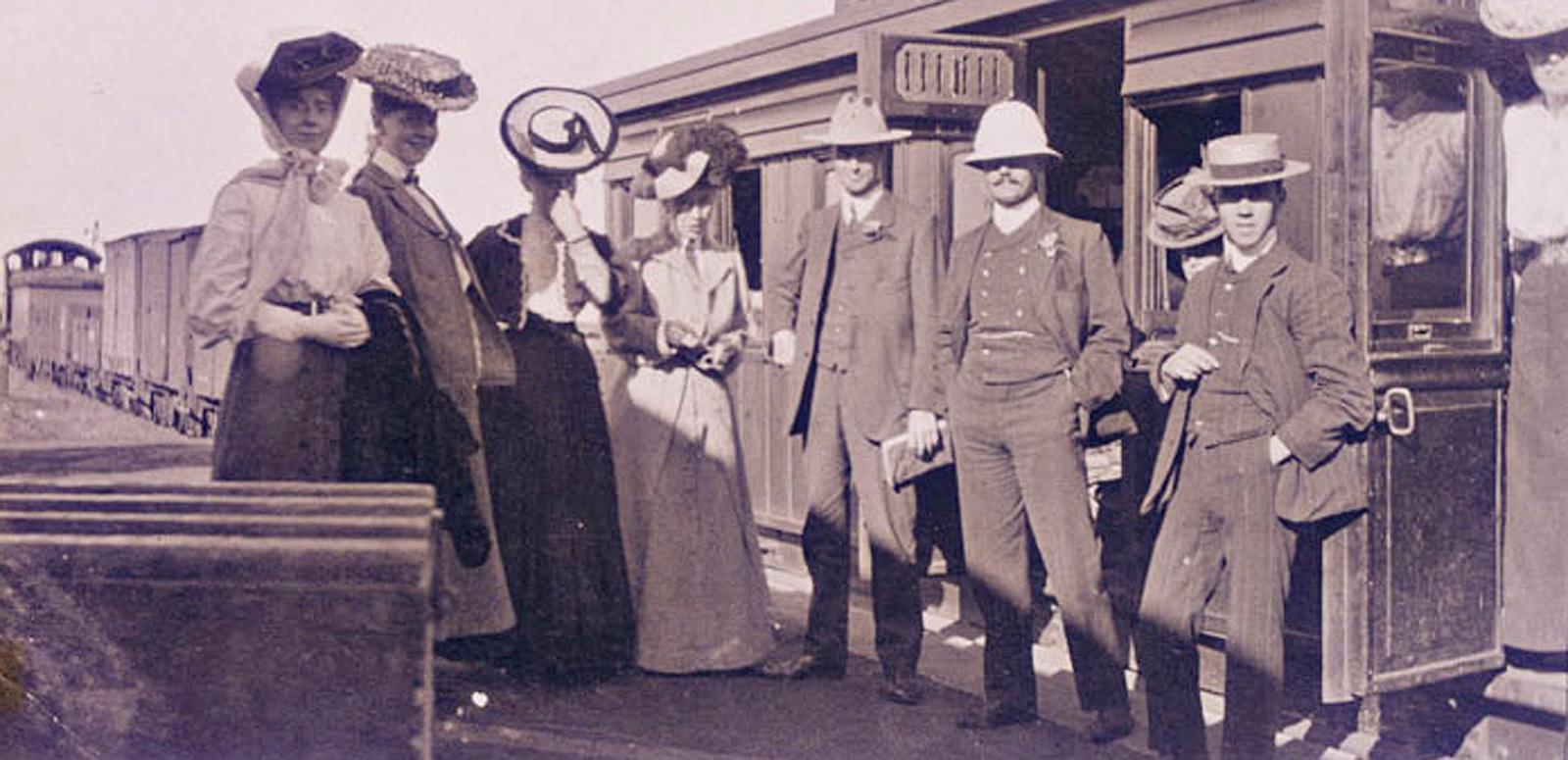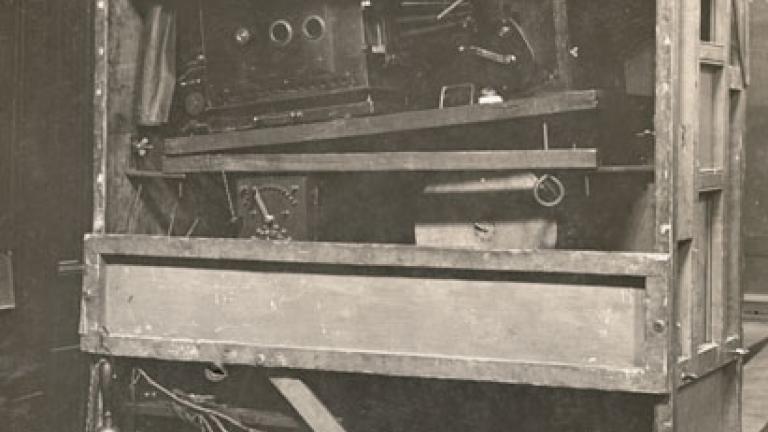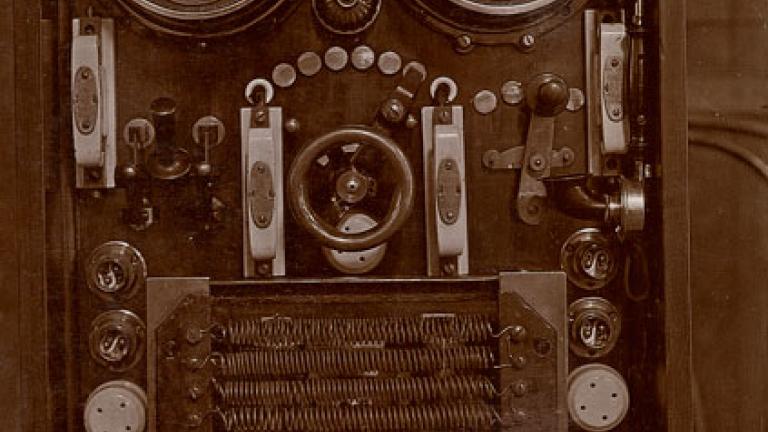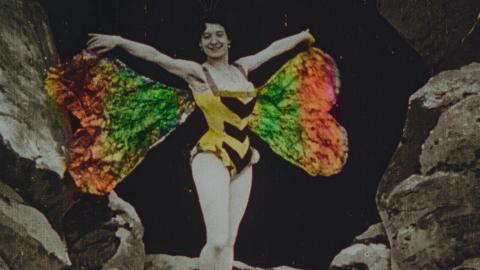

Corricks On Tour
On the road with the Corricks
The Corrick Collection has been digitally restored as part of the NFSA Restores program to digitise, restore and preserve Australian films so they can be seen in today’s digital cinemas. Please note this video is silent.

Over 100 years before the modern ‘mash-up’, the Australian-based Corrick Family Entertainers were showing repackaged and complete versions of the latest special effects, comedy and actuality (non-fiction) films in black-and-white and dazzling colour.
Screened with live musical accompaniment provided by the family, ‘Leonard’s Beautiful Pictures’ formed part of a variety act which toured Australasia, South-East Asia and Europe from 1897 to 1914.
A Rare Find for the NFSA
Over the years the NFSA has researched the troupe’s surviving 135 films, uncovering titles once considered lost and shedding light on the way Australians experienced moviegoing in the early 20th century. Film collections of this age are rare. Few come with the wealth of documentation found in the Corrick Collection, including photographs, tour memorabilia and oral history interviews with Leonard and his son John.
From the surviving footage film curators Meg Labrum and Sally Jackson have identified and pieced together short and long versions of rare original nitrate films from Britain, the USA, France and Italy, as well as a number of Corrick family productions. Says Labrum, ‘It’s a treasure trove of black-and-white, tinted and hand-coloured stencilled films.’
The Corrick Collection was restored photochemically in the 2000s, and then digitally in 2021.
On the road with the Corrick Family Entertainers
New Zealanders Albert and Sarah Corrick and their eight children burst onto the Australasian variety performance circuit in 1897. The Corrick Family Entertainers, later known as the Marvellous Corricks, promised regional and metropolitan audiences wholesome family fare spiced with ‘Vim, Verve, Vivacity, Variety’.
Their two-hour shows were a multimedia extravaganza of vocal and instrumental pieces, bell ringing, dancing, comedy sketches, poetry recitals and – a precursor to karaoke – singalongs using illustrated lantern slides. In 1901, the Corricks introduced a short program of silent films projected by 14-year-old Leonard – ‘Biograph expert’, clarinet soloist, dancer and mechanic.
Listen to Leonard Corrick talking about his life with the Corrick performing troupe:
Excerpt from Leonard Corrick oral history interview, c1966. NFSA title: 419142.
News, Technology and Special Effects
Later billed as Leonard’s Beautiful Pictures, the increasingly popular segment showcased excerpts from the latest newsreels, trick films, dramas, travelogues and comedies produced by leading film houses Pathé, Edison, Gaumont and Itala. The Corricks displayed a taste for innovative special effects films, including RW Paul’s The Hand of the Artist (1906) and morality tales such as Pathés La Poule aux Oeufs d’Or (1905, The Hen that Laid the Golden Egg) and Les Fleurs Animées (1906, Living Flowers), which the Corricks advertised as ‘The finest "Color” Film of the Twentieth Century’.
For many in the audience, films such as Pathé’s Du Caire aux Pyramides (1905, From Cairo to the Pyramids) offered a rare glimpse of the outside world, while others hinted at the dramatic technological and social changes that marked the early 20th century.

Keen to stay ahead of the competition, the Corricks were quick to embrace new technology. In 1906, they bought an electric generator to run their projector, fans and lighting – leading to their claim to have introduced electricity to some country towns. ‘Leonard’s Electric Engine and Dynamo’ reduced projection flicker, greatly improving the viewing experience. Another innovation was a portable metal bio box designed to reduce injuries caused by nitrate film fires.
With the purchase of a motion picture camera in 1907, the family started making and appearing in their own films, some of which survive in the Corrick Collection. Street Scenes in Perth (1907), shot, edited and screened in one day, is one of a number of Corrick films designed to lure local audiences in whichever town the troupe was performing. Typically, the family would advertise their intention to shoot a moving picture at a given location, along with details of where the film would be shown that evening.
Consummate self-promoters, the Corricks acted in, and publicised, the family firm in their films - as you can see in this excerpt from the short chase comedy The Bashful Mr Brown (1907), possibly the first narrative film made in Western Australia, the unfortunate Mr Brown, pursued by children, dashes past a billboard advertising a Corrick concert:
The Bashful Mr Brown (Leonard Corrick, 1907). NFSA title: 14486. Please note this clip is silent.
Protecting the Priceless Family Legacy
Following Albert’s death in 1914, and the marriages of several Corrick children, the family ceased touring and settled in Tasmania. Their films and projection equipment were stored in Sarah Corrick’s garage and used by her grandchildren to practise cutting and splicing for their own backyard screenings. Leonard’s son John became the family archivist, eventually donating hundreds of reels of nitrate film to the NFSA and equipment and assorted memorabilia to the Queen Victoria Museum and Art Gallery, in Launceston.

The Corrick family, c1912

Passout tickets from the Corrick’s World tour, date unknown

Pathé light box, designed to project lantern slides and film, 1909

Switchboard for touring cinematograph – a film camera, developer and projector in one, date unknown

Ruby and Amy Corrick (seated on camel), Western Australia 1906–1908

The Corrick family on the road, location unknown, 1906–1908

Ruby Corrick at the wheel, with sisters Elsie and Jessie, in regional Australia, 1911

The Corrick’s touring convoy pose outside the Jubilee Hotel, Lottah, Tasmania, 1914

Poster promoting a Corrick matinee performance at the Town Hall, Adelaide, South Australia, August 1906

Billboards advertising the Corrick’s variety act, Adelaide, South Australia, October 1912
Read more about the Corrick collection's photochemical restoration and the new digital restoration.
You can also download 'The Corrick Collection: A Case Study in Asia-Pacific Itinerant Film Exhibition (1901–1914)' by Leslie Anne Lewis, NFSA Journal, 2007, Vol 2. No. 2.
Main image: The Corricks touring by train in regional Australia, 1906–1908. NFSA title: 755846
The National Film and Sound Archive of Australia acknowledges Australia’s Aboriginal and Torres Strait Islander peoples as the Traditional Custodians of the land on which we work and live and gives respect to their Elders both past and present.


